#San Pio
Text
Padre Pio era accanto a me quando sono stato investito
Sono stato investito ma accanto a me c’era padre Pio che mi ha aiutato. E’ la testimonianza ulteriore che padre Pio non abbandona coloro che si affidano alla sua protezione e alle sue preghiere. Guarda il video per saperne di più.

View On WordPress
2 notes
·
View notes
Text

Tramonto a Castelnuovo.
Abruzzo,Italy.
#castelnuovo#san pio delle camere#abruzzo#italy#italia#europe#italian photography#robertocastigliaphotography#sunset#nature#nature photography#original photography#photography#landscape#photographers on tumblr#long exposure#aesthetic pictures#beautiful places#artists on tumblr#art
46 notes
·
View notes
Text
Il vero senso della vita di Padre Pio
Scrive padre Pellegrino Funicelli, «il vero senso della sua personalità e di tutta la sua vita: la sua incrollabile fede». Certamente in padre Pio il piccolo seme della fede trovò terreno fertilissimo onde trasformarsi in albero maestoso.
Continue reading Il vero senso della vita di Padre Pio
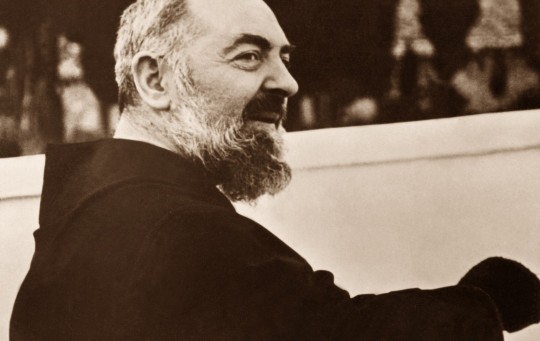
View On WordPress
#approfondimenti#fede#Francesco Forgione#Insegnamenti#padre pio#Padre Pio da Pietrelcina#Pietrelcina#san pio da pietrelcina#testimonianze
2 notes
·
View notes
Text
SAN PIO DA PIETRELCINA, sacerdote cappuccino.


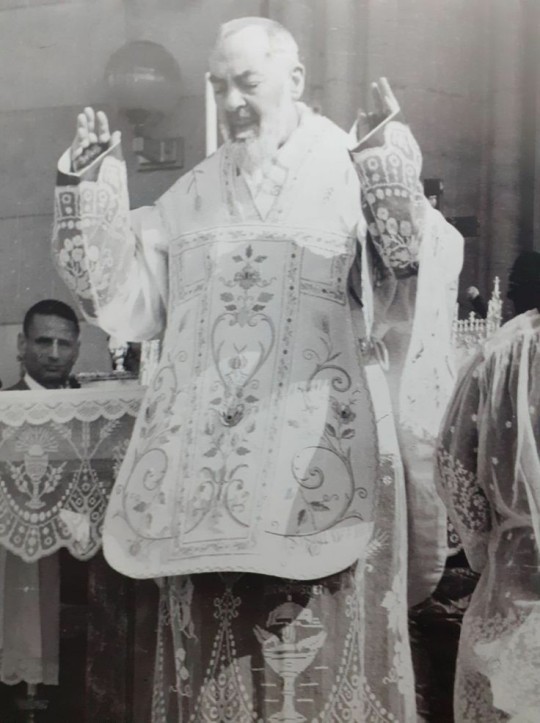


#catholicism#chiesa cattolica#christianity#spirituality#San Pio da Pietrelcina#padre pio#san Giovanni Rotondo#francescani#frati Cappuccini#san francesco
36 notes
·
View notes
Text
San Pio X e l’imponderabile che ci aspetta
L’imponderabile, l’imprevedibile, è ciò che non può essere previsto e programmato dagli uomini. Esso esiste, fa parte della nostra vita, ma non è il caso. Il caso, che è l’assenza di significato degli eventi, non esiste. Tutto ciò che accade, infatti, nella nostra vita e in quella dell’universo intero, ha un significato.
Continue reading Untitled
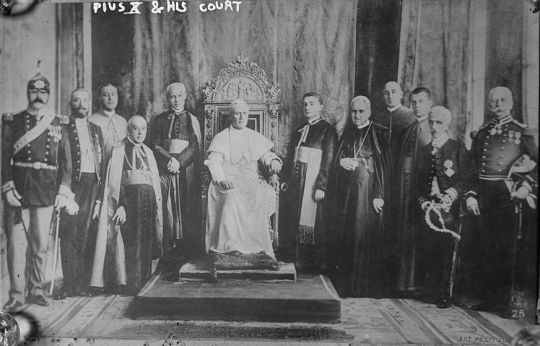
View On WordPress
3 notes
·
View notes
Text
On the 23th of September is the feast day of St. Pio of Pietrelcina, priest
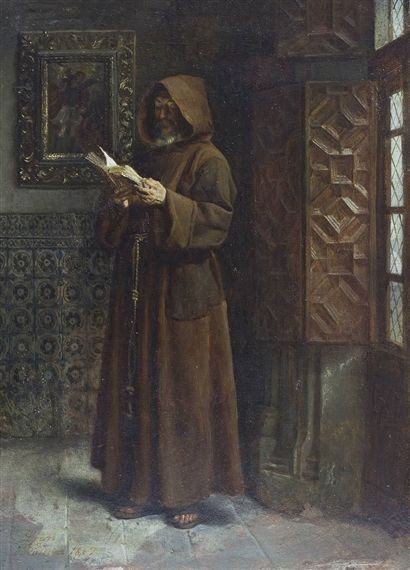
Ignacio de Leon y Escosura: Franciscan Monk Reading
Life of St. Pio of Pietrelcina
In one of the largest such ceremonies in history, Pope John Paul II canonized Padre Pio of Pietrelcina on June 16, 2002. It was the 45th canonization ceremony in Pope John Paul’s pontificate. More than 300,000 people braved blistering heat as they filled St. Peter’s Square and nearby streets. They heard the Holy Father praise the new saint for his prayer and charity. “This is the most concrete synthesis of Padre Pio’s teaching,” said the pope. He also stressed Padre Pio’s witness to the power of suffering. If accepted with love, the Holy Father stressed, such suffering can lead to “a privileged path of sanctity.”
Many people have turned to the Italian Capuchin Franciscan to intercede with God on their behalf; among them was the future Pope John Paul II. In 1962, when he was still an archbishop in Poland, he wrote to Padre Pio and asked him to pray for a Polish woman with throat cancer. Within two weeks, she had been cured of her life-threatening disease.
Born Francesco Forgione, Padre Pio grew up in a family of farmers in southern Italy. Twice his father worked in Jamaica, New York, to provide the family income.
At the age of 15, Francesco joined the Capuchins and took the name of Pio. He was ordained in 1910 and was drafted during World War I. After he was discovered to have tuberculosis, he was discharged. In 1917, he was assigned to the friary in San Giovanni Rotondo, 75 miles from the city of Bari on the Adriatic.
On September 20, 1918, as he was making his thanksgiving after Mass, Padre Pio had a vision of Jesus. When the vision ended, he had the stigmata in his hands, feet, and side.
Life became more complicated after that. Medical doctors, Church authorities, and curiosity seekers came to see Padre Pio. In 1924, and again in 1931, the authenticity of the stigmata was questioned; Padre Pio was not permitted to celebrate Mass publicly or to hear confessions. He did not complain of these decisions, which were soon reversed. However, he wrote no letters after 1924. His only other writing, a pamphlet on the agony of Jesus, was done before 1924.

Source of picture: https://nationalgeographicscans.tumblr.com
Padre Pio rarely left the friary after he received the stigmata, but busloads of people soon began coming to see him. Each morning after a 5 a.m. Mass in a crowded church, he heard confessions until noon. He took a mid-morning break to bless the sick and all who came to see him. Every afternoon he also heard confessions. In time his confessional ministry would take 10 hours a day; penitents had to take a number so that the situation could be handled. Many of them have said that Padre Pio knew details of their lives that they had never mentioned.
Padre Pio saw Jesus in all the sick and suffering. At his urging, a fine hospital was built on nearby Mount Gargano. The idea arose in 1940; a committee began to collect money. Ground was broken in 1946. Building the hospital was a technical wonder because of the difficulty of getting water there and of hauling up the building supplies. This “House for the Alleviation of Suffering” has 350 beds.
A number of people have reported cures they believe were received through the intercession of Padre Pio. Those who assisted at his Masses came away edified; several curiosity seekers were deeply moved. Like Saint Francis, Padre Pio sometimes had his habit torn or cut by souvenir hunters.
One of Padre Pio’s sufferings was that unscrupulous people several times circulated prophecies that they claimed originated from him. He never made prophecies about world events and never gave an opinion on matters that he felt belonged to Church authorities to decide. He died on September 23, 1968, and was beatified in 1999.
Source: https://www.franciscanmedia.org/saint-of-the-day/saint-pio-of-pietrelcina
#saints#St. Pio of Pietrelcina#priest#This is the most concrete synthesis of Padre Pio’s teaching#a privileged path of sanctity#House for the Alleviation of Suffering#The Gospel image of ‘yoke’ evokes the many trials that the humble Capuchin of San Giovanni Rotondo endured.#Today we contemplate in him how sweet is the ‘yoke’ of Christ and indeed how light the burdens are whenever someone carries these with faith#yoke#God#Jesus#Christ#Jesus Christ#Father#Son#Holy Spirit#Holy Trinity#christian religion#faith#hope#love#stress reliever
14 notes
·
View notes
Text
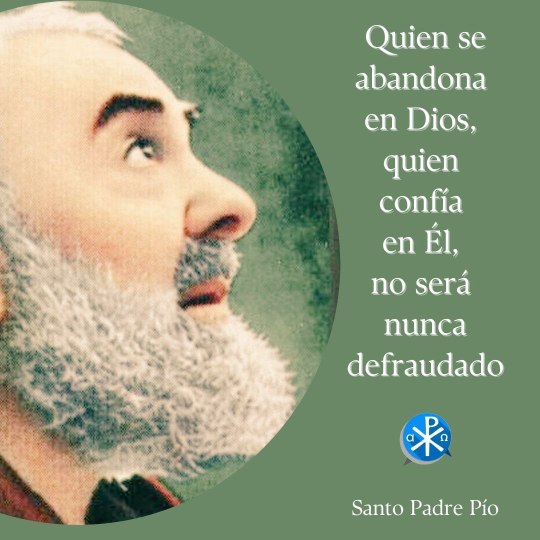
Confianza ilimitada en Dios también cuando la desdicha y las insidias del enemigo lleguen
a molestarte. Quien se abandona en Dios, quien confía en Él, no será nunca defraudado.
Que tu vida entera se gaste en acciones de gracias
al Esposo divino,
a Él vayan orientadas todas tus acciones, todas tus palpitaciones, todos tus suspiros;
permanece siempre con Él durante el tiempo de la desdicha y de la prueba; permanece también con Él en las consolaciones espirituales; en fin, vive para Él,
gasta toda tu vida por Él, entrégale a Él tu partida de esta tierra y la de los demás, cuando,
donde y como Él lo quiera. Muéstrate siempre y en todo cada vez más digna de tu vocación cristiana.
Santo Padre Pío
(30 de marzo de 1915, a Raffaelina Cerase, Ep. II, 382)
9 notes
·
View notes
Text

Along the mission trail in beautiful San Antonio. ✝️ ⛪🔔🌞🔔🔔
#san antonio#Texas missions#mission San Juan#mission San jose#mission Alamo#remember the alamo#alamo#way of saint james#the way of saint james#el camino de santiago#el camino#padre pio#spanish empire#spanish architecture#colonial era#colonial architecture#catholic church#roman catholic church#holy bible#jesus cristo#virgen de guadalupe#virgin de guadelupe#texas photographer#texas landscape#south texas#church bells#old church#spanish history#california missions#landscape photography
4 notes
·
View notes
Text
San Pio V scomunica e depone Elisabetta I con “Regnans in excelsis”
Ringraziando RS qui, volentieri pubblichiamo e condividiamo.
Il 25 febbraio 1570 Papa san Pio V pubblica la bolla “Regnans in excelsis”.
“… Sorretti dunque da quella Autorità che volle collocarci, sebbene impari rispetto a tanto onere, su questo supremo trono di giustizia, nella pienezza della potestà apostolica, dichiariamo la predetta Elisabetta eretica e fautrice di eretici, e dichiariamo…

View On WordPress
0 notes
Text
Il Tempo e le Anime (A mio padre e a mia madre) - Parte sesta
Lo spazio interiore creato dal Professore in Riccardo era in contrasto diretto con la religione cattolica. Pur dissimulando per necessità chi effettivamente era, Riccardo non rilevava alcun conflitto tra l’essere mago che persegue solo il bene e i precetti religiosi, verso di essa ebbe sempre un atteggiamento di profondo rispetto. Non era praticante, come tanti a Bologna; della Messa avvertiva il…

View On WordPress
#Alda#Basilica di San Pietro#Bologna#Padre Pio#Riccardo#Roma#San Pio da Petrecina#Seconda Guerra Mondiale
0 notes
Text
SAINT OF THE DAY (September 23)
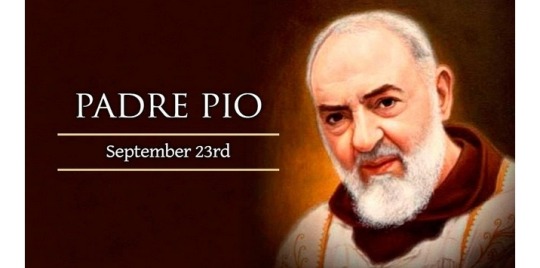
On September 23, the Catholic Church remembers the Italian Franciscan priest St. Pio of Pietrelcina, better known as “Padre Pio," who is known for his suffering, humility and miracles.
The man later known by these names was originally named Francesco Forgione, born to his parents Grazio and Maria on 25 May 1887.
His parents had seven children, two of whom died in infancy.
They taught the five surviving children to live their faith through daily Mass, family prayer of the rosary, and regular acts of penance.
Francesco had already decided at a young age to dedicate his entire life to God.
At age 10, he felt inspired by the example of a young Capuchin Franciscan and told his parents: ��I want to be a friar – with a beard.”
Francesco’s father spent time in America working to finance his son’s education, so he could enter the religious life.
On 22 January 1903, Francesco donned the Franciscan habit for the first time.
He took the new name Pio, a modernized Italian form of “Pius,” in honor of Pope St. Pius V.
He made his solemn vows four years later and received priestly ordination in the summer of 1910.
Shortly after, he first received the Stigmata – Christ’s wounds, present in his own flesh.
Along with these mystical but real wounds, Padre Pio also suffered health problems that forced him to live apart from his Franciscan community for the first six years of his priesthood.
By 1916, he managed to re-enter community life at the Friary of San Giovanni Rotondo, where he lived until his death.
He handled many duties as a spiritual director and teacher, covering for brothers drafted into World War I.
During 1917 and 1918, Padre Pio himself briefly served in a medical unit of the Italian army.
He later offered himself as a "spiritual victim” for an end to the war, accepting suffering as a form of prayer for peace.
Once again, he received the wounds of Christ on his body. They would remain with him for 50 years, through a succession of global conflicts.
Against his own wishes, the friar’s reputation for holiness and attending miracles began to attract huge crowds.
Some Church officials, however, denounced the priest and had him banned from public ministry in 1931.
Pope Pius XI ended the ban two years later, and his successor Pius XII encouraged pilgrimages to Padre Pio’s friary.
Known for patient suffering, fervent prayer and compassionate spiritual guidance, Padre Pio also lent his efforts to the establishment of a major hospital, the “Home to Relieve Suffering.”
Padre Pio died on 23 September 1968 at the age of 81.
Three years after his death, Pope Paul VI marveled at his simple and holy life in an address to the Capuchin Order.
Pope John Paul II beatified him on 2 May 1999 and canonized on 16 June 2002.
He is the patron saint of adolescents, stress relief, civil defense volunteers, and January blues.
“A worldwide following gathered around him ... because he said Mass humbly, heard confessions from dawn to dusk and was – it is not easy to say it – one who bore the wounds of our Lord,” Pope Paul VI explained. “He was a man of prayer and suffering.”
1 note
·
View note
Text
Mi sento smarrito
Anche i santi nella loro vita hanno sentito momenti di smarrimento, ce lo testimonia San Pio da Pietrelcina quando più volte ha provato il senimento di sentirsi solo e abbandonato, tante volte ha esclamato: ” Mi sento smarrito!”.
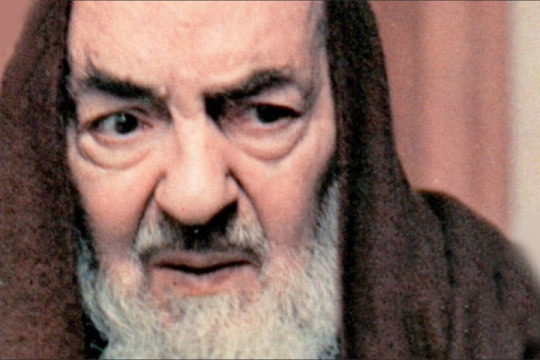
View On WordPress
0 notes
Text

San Pio delle Camere.
Abruzzo,Italy.
#san pio delle camere#abruzzo#italy#italia#europe#italian photography#robertocastigliaphotography#castle#history#architecture#landscape#landscapes#landscape photography#photography#travel destinations#photographers on tumblr#original photography#beautiful places#artists on tumblr#art
24 notes
·
View notes
Text
San Pio, un padre per tutti
La paternità spirituale e sacerdotale del grande Santo di Pietrelcina.
Continue reading San Pio, un padre per tutti
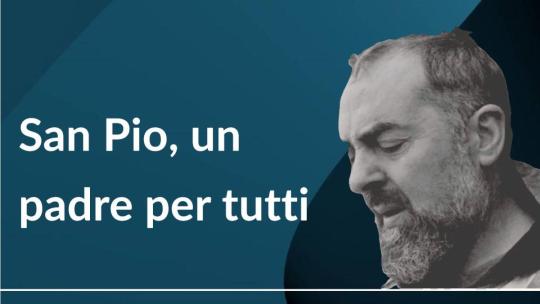
View On WordPress
#approfondimenti#confessione#fioretti#Insegnamenti#padre pio#Padre Pio da Pietrelcina#paternità#san pio da pietrelcina#testimonianze
2 notes
·
View notes
Text
PIO XII PROCLAMA SAN FRANCESCO D'ASSISI E SANTA CATERINA DA SIENA PATRONI D'ITALIA.
#catholicism#chiesa cattolica#christianity#spirituality#pio xii#rome#san francesco di assisi#santa caterina da siena#italy#patroni
2 notes
·
View notes
Text
Rafael Merry Del Val, il cardinale dimenticato
Cardinale ad appena 38 anni, il più giovane segretario di Stato della storia e il primo non italiano, Rafael Merry del Val fu una figura di spicco nella Chiesa a cavallo tra XIX e XX secolo. Servo di Dio, una biografia di Roberto de Mattei ne ripercorre la vita.
Continue reading Rafael Merry Del Val, il cardinale dimenticato

View On WordPress
0 notes